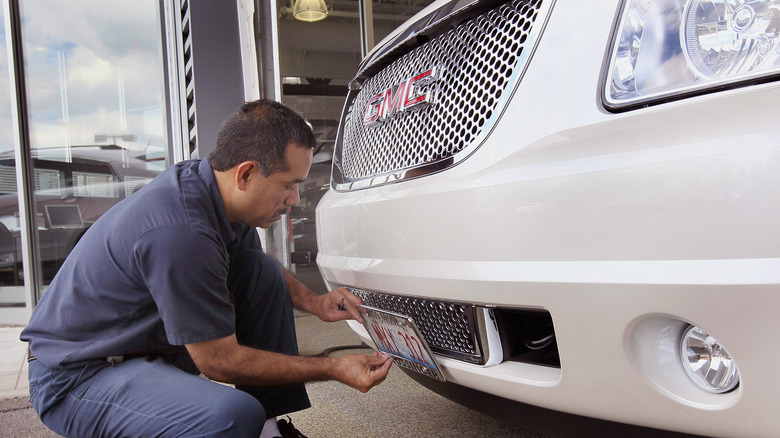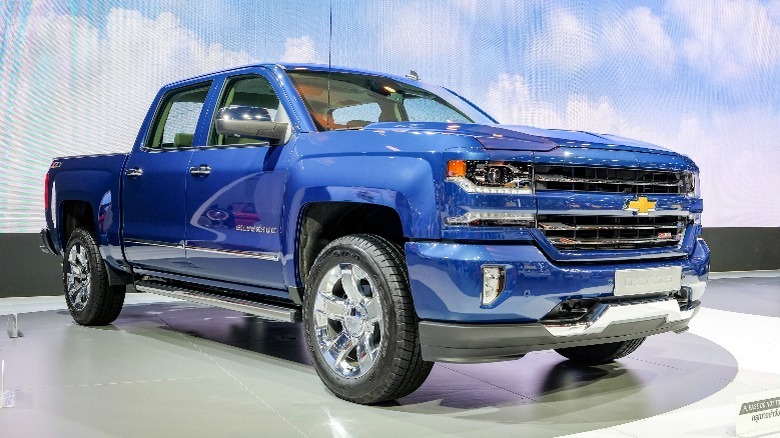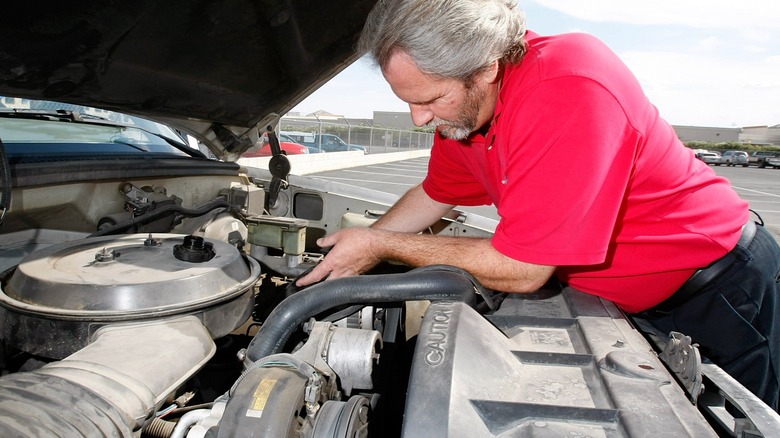Everything To Know About GM's 6.0L V8 Engine
When you think GM, you think trucks and SUVs; you think power and size. Among GM's engine ranks, there's one that you'll find in many vehicles that need power to hurl their big sizes around but don't have that much space in the engine bay: the 6.0L V8 L96 engine. It's a good balance between power and platform efficiency.
The L96 engine is a gasoline-powered, natural-aspirated, small-block engine. It has 6.0 liters of displacement and a V8 configuration. It's also known as the Vortec 6000, as a V8 member of GM's Gen IV small block engine family, and featured a lot in big GM vehicles between 2010 and 2017. This engine succeeded the LY6 6.0-liter V8 (an earlier Gen IV Vortec variant) and preceded the EcoTec3 engines. The L96 is the last Vortec engine still in use, and it just might remain so with efficiency and carbon emission concerns.
This workhorse has seen a good deal of applications throughout its lifespan, appearing in the Silverado, GMC Yukon, Chevy Suburban, and a few other similar GM vehicles. Its displacement and motor design make it a high-horsepower and high-torque engine that did well with turbo and supercharger upgrades.
What are the specs, features, and design?
This cast-iron block V8 engine does about 360 horsepower at 5,400 rpm in the Chevrolet Silverado HD and 380 lb-ft of torque at 4,200 rpm. That packs a decent punch,which is no surprise, seeing as the engine was made from Corvette's and Camaro's famous LS engines. If you want a 7,800-pound truck that can do zero to 60 in 6.5 seconds, you should get a 2017 Silverado 2500 HD. The LS-based configuration is also why it's an easy engine to mod and swap, with many aftermarket parts.
There are two valves per cylinder with a compression ratio of 9.7:1, meaning a sacrifice of speed for power (horsepower in exchange for torque) — which makes sense for big vehicles. The cylinders also have a unique shape that improves air intake, allowing for more power and torque. Additionally, the L96 further improves efficiency and performance thanks to variable valve timing (VVT).
You'll also notice fewer vibrations from an engine of this size. It has noise-dampening components and a superior motor mounting system that eliminates rattling the GM vehicle's chassis. For instance, the exhaust manifold was designed to be quieter and insulate heat to reduce the engine's overall temperature.
What's its history and application?
The LY6 paved the way for the L96, serving in GM's SUVs and trucks from 2007 to 2010. Just like the LS engine it's based on became known for its superior power and durability, so did the LY6. GM used it in the Sierra HD and Silverado HD from 2007 to 2009 and the Suburban and Yukon XL from 2007 to 2013. So, when the L96 came in 2010, both of these Vortec 6000s worked together until GM left the LY6 in 2013.
While the LY6 served well, one major thing that separates the L96 from its LY6 predecessor is its flex-fuel capability. If you don't know what flex fuel is, it's gasoline made with a mixture of methanol and ethanol. It burns cleaner, and it is better for the environment. In fact, this flex-fuel capability may have been the leading reason GM developed the L96.
Here are all the GM cars that use the L96:
- Chevrolet Suburban 2500 (GMT900) (2010 to 2013)
- Chevrolet Suburban 3500HD (2016 to 2017)
- Chevrolet Silverado HD (2010 to 2017)
- Chevrolet Express (Cargo, Pass, Cutaway) (2010 to 2017)
- GMC Sierra HD (2010 to 2017)
- GMC Yukon XL (2010 to 2013)
- GMC Savana (2010 to 2017)
The iconic Vortec 6000 has lived out its glory, with everyone going hybrid and getting more eco-conscious. The EcoTec3 Gen V engines have come to take its place.
How reliable is this engine?
GM built this engine to be a workhorse, and it shines as one of the most durable engines for a truck. You can ride the L96 up to 300,000 miles — even 350,000 miles in some cases. Expect the engine to last long with regular maintenance and a lot more maintenance after the 300K mile mark.
It's not perfect, though, and there are some common issues you may have to troubleshoot. The throttle position sensor and knock sensor are prone to failure. These are mostly caused by exposure to the elements or carbon buildup. They could lead to knocking and misfiring. Other issues include exhaust manifold leaks and water pump failure. The manifold leak, in particular, happens because the bolts get loose or snap. You can tell when it happens when the engine becomes louder.
Many of these issues are mild; you could do it yourself if you're the DIY sort. Either way, regular maintenance will keep you from trouble with this engine. No wonder it ranks as one of the most reliable engines in the Chevrolet Silverado.


